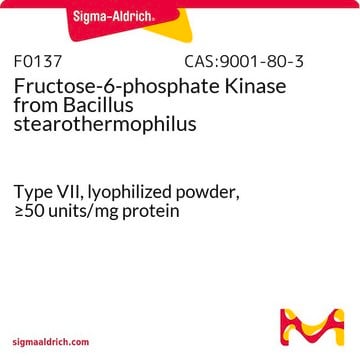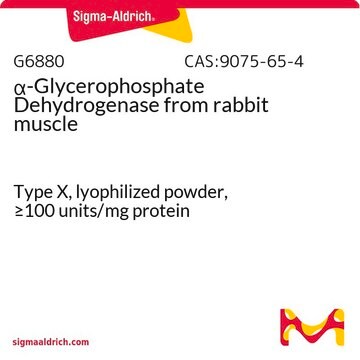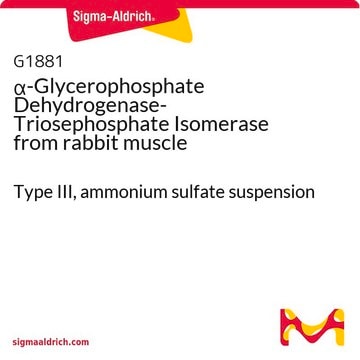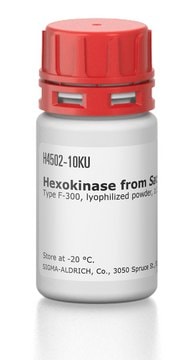Wichtige Dokumente
F8381
Fructose-6-phosphate Kinase, Pyrophosphate-dependent from Propionibacterium freudenreichii (shermanii)
lyophilized powder, ≥4.0 units/mg protein
Synonym(e):
6-Phosphofructokinase(pyrophosphate), Pyrophosphate: D-fructose-6-phosphate 1-phosphotransferase
About This Item
Empfohlene Produkte
Form
lyophilized powder
Qualitätsniveau
Spezifische Aktivität
≥4.0 units/mg protein
Zusammensetzung
Protein, 5.0-25.0% biuret
Lagertemp.
−20°C
Anwendung
Biochem./physiol. Wirkung
Sonstige Hinweise
Einheitendefinition
Physikalische Form
Signalwort
Danger
H-Sätze
Gefahreneinstufungen
Eye Dam. 1 - Repr. 1B - Resp. Sens. 1 - Skin Corr. 1C
Lagerklassenschlüssel
6.1C - Combustible acute toxic Cat.3 / toxic compounds or compounds which causing chronic effects
WGK
WGK 3
Flammpunkt (°F)
Not applicable
Flammpunkt (°C)
Not applicable
Persönliche Schutzausrüstung
dust mask type N95 (US), Eyeshields, Faceshields, Gloves
Hier finden Sie alle aktuellen Versionen:
Besitzen Sie dieses Produkt bereits?
In der Dokumentenbibliothek finden Sie die Dokumentation zu den Produkten, die Sie kürzlich erworben haben.
Kunden haben sich ebenfalls angesehen
Active Filters
Unser Team von Wissenschaftlern verfügt über Erfahrung in allen Forschungsbereichen einschließlich Life Science, Materialwissenschaften, chemischer Synthese, Chromatographie, Analytik und vielen mehr..
Setzen Sie sich mit dem technischen Dienst in Verbindung.














